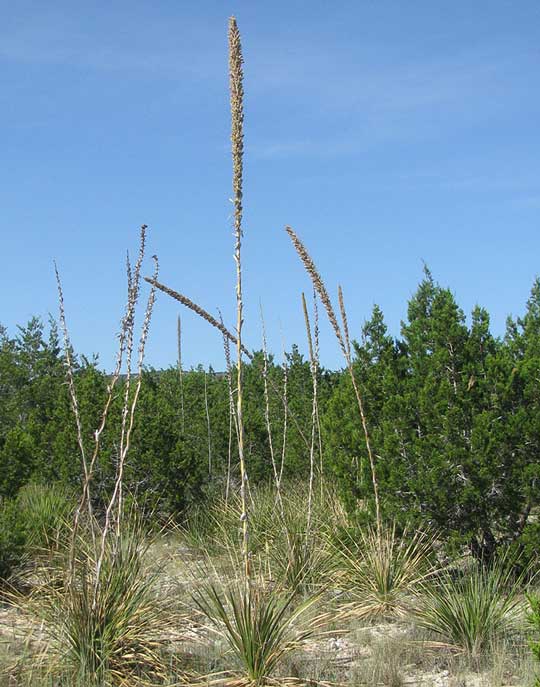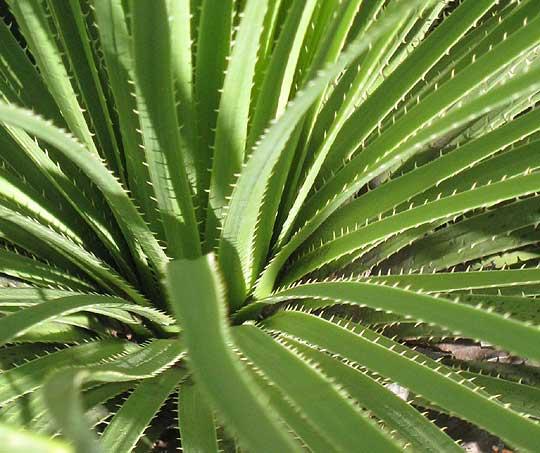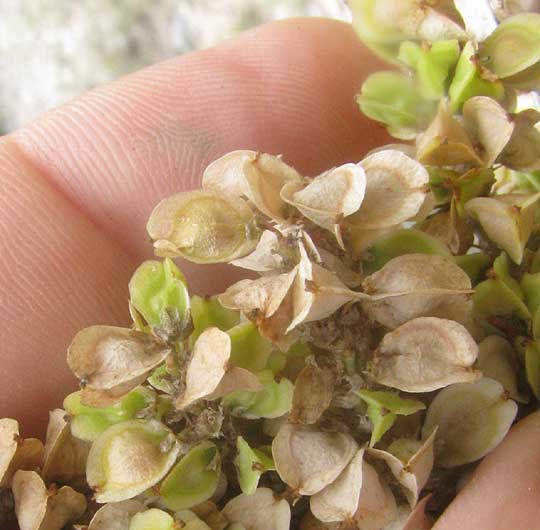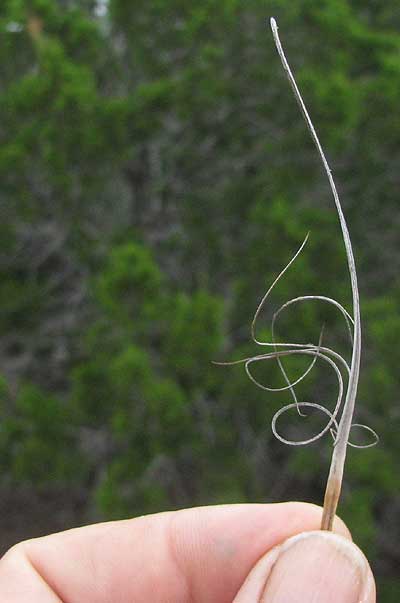Excerpts from Jim Conrad's
Naturalist Newsletter
from the September 9, 2012 Newsletter issued from the valley of the Dry Frio River in northern Uvalde County, southwestern Texas, on the southern border of the Edwards Plateau; elevation ~1750m (~5750 ft); N29.62°, W99.86°; USA
TEXAS SOTOL
Wade across the Dry Frio River's ankle-deep waters just behind the cabin, climb the opposite slope, and instead of finding ranches or thickets of Ashe Junipers and Live Oaks as on this side, you see what's shown below:

Those flower stalks stand about ten feet tall (3m), so these plants provide an imposing presence, and when there are acres of them it's a marvelous thing to walk among them. This community grows where it does because in the past the flooding Dry Frio has left a terrace of cobblestones and gravel, and not much soil, several acres large. Rainwater soaks right through such unconsolidated debris fields, so only plants highly adapted to drought conditions can survive here. In fact these are very tough plants, as indicated by the hooked spines and tough fibers in a leaf section below:

Below, you can see how the leaves arise from a basal stalk:

This plant is not an agave, though the Flora of North America assigns it to the Agave Family. It's the Texas Sotol, DASYLIRION TEXANUM, a species endemic just to southwestern Texas, here along the southern border of the Edwards Plateau, and a bit into adjacent northern Mexico. When I did my Spring Comes to the Desert book (which can be downloaded for free at http://www.backyardnature.net/j/books/index.htm#desert) I got to know Sotol, but that was a different species. In fact, 17 sotol species are recognized, and on the whole Earth sotols occur naturally only in Mexico and the US Desert Southwest. Here we have one of only three sotol species that extend into the US.
Like the agaves, sotols live for several years as a rosette of leaves, then they blossom and set fruit, and promptly die.
If you are familiar with the agaves' boxy, capsular fruits, you'll be interested to see how different sotol fruits are -- almost like those of the roadside weed called Curly Dock -- as shown below:

The various sotol species have been important to people for a long time. First of all, the tough fibers in their leaves can be teased out and used for weaving and sewing. Indigenous Americans produced sandals, baskets, ropes, mats, and many other items with sotol fiber. Archeologists have dated artifacts made of sotol to as far back as 7000 BCE. You can see fibers curling from the disintegrating tip of a sotol leaf below:

Also, like many agaves, the sotols produce a juice that can be fermented into an alcoholic drink usually called sotol. Still much drunk in Mexico, it's the "state drink" of the northern Mexican states of Chihuahua, Durango and Coahuila. Troughs cut into stone, with discarded sotol remains nearby, are assumed to be where ancient people produced the sotol drink as far back as 9000 years ago.
Pull an entire sotol leaf from the plant and its base can be cooked and eaten like an artichoke leaf -- by scraping nourishment from the base between the front teeth.
Field marks distinguishing our Texas Sotol from other US sotols include the leaves' greenness as opposed to other species' grayish sheen, and the leaves being particularly slender -- only up to ¾ inch wide (2cm).
Some folks in this area proudly display Texas Sotol plants in their front yards. Sotol is simply a wonderful plant, and I expect that I'll be wading across the Dry Frio many times just for the pleasure of walking among them.